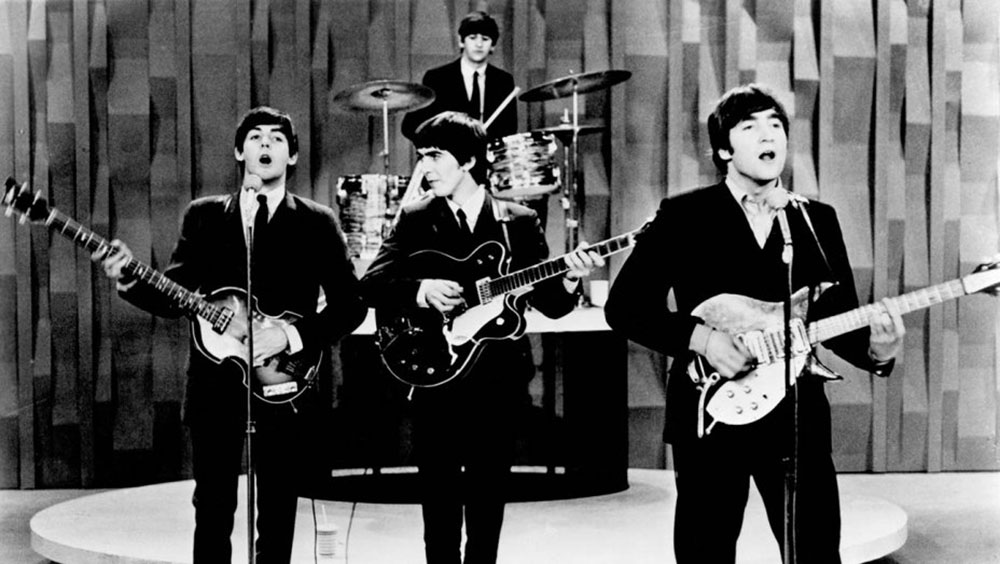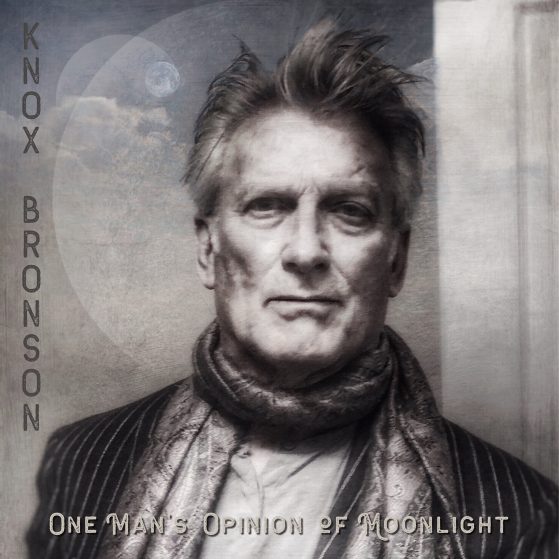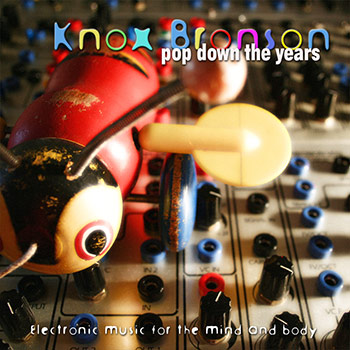I stole this article for my old website Sun Pop Blue and now I’m stealing it again for this site. It bears, like Strunk and White’s “Elements of Style,” re-reading every six months or so. It is a gentle reminder that music, and all art, must have a higher purpose, which artists in all media should heed. As Hornby writes: “I believe there is still a part of me that persists in thinking that rock music, and indeed all art, has an occasional role to play in the increasingly tricky art of making us glad we’re alive.”
And this article is not about the Beatles, but they sure make people glad to be alive. Still. Almost sixty years later. So I’ll put a picture of them here as a reminder.

Everybody knows who Rick Hornby is, but in case you forgot, he’s the author of High Fidelity, the novel that became wonderful year 2000 chick-flick for record geeks around the world, starring John Cusack and Jack Black, along with a slew of other wonderful actors. This article was published on the New York Times OpEd page on May 21, 2004.
And herewith:
This gig happens to be taking place in a pub called the Fiddler’s Elbow, in Kentish Town, north London, but doubtless scenes like it are being played out throughout the world: a bar band, a pickup drummer from an earlier gig, probably even the table-shifting. It’s just that three or four months earlier, Bruce Springsteen, a fan of the band, invited the Bielanko brothers to share the stage with him at Giants Stadium for an encore, and Marah will shortly release what would, in a world with ears, be one of 2004’s most-loved straight-ahead rock albums, “20,000 Streets Under the Sky.” These guys shouldn’t be playing in the Fiddler’s Elbow with a pickup drummer. And they shouldn’t be passing a hat around at the end of the gig, surely? How many people have passed around the hat in the same year that they appeared at Giants Stadium?
Thirty years ago, almost to the day, Jon Landau published his influential, exciting, career-changing, and subsequently much derided and parodied article about Bruce Springsteen in The Real Paper, an alternative weekly – the article that included the line “I saw rock ‘n’ roll future and its name is Bruce Springsteen.” I had never read the rest of it until recently, and it remains a lovely piece of writing. It begins, heartbreakingly: “It’s four in the morning and raining. I’m 27 today, feeling old, listening to my records and remembering that things were different a decade ago.” I’m only guessing here, but I can imagine are a number of you reading this who can remember what it was like to feel old at 27, and how it bears no resemblance to feeling old at 37, or 47. And you probably miss records almost as much as you miss being 27.
It’s hard not to think about one’s age and how it relates to rock music. I just turned 47, and with each passing year it becomes harder not to wonder whether I should be listening to something that is still thought of as more age appropriate – jazz, folk, classical, opera, funeral marches, the usual suspects. You’ve heard the arguments a million times: most rock music is made by the young, for the young, about being young, and if you’re not young and you still listen to it, then you should be ashamed of yourself. And finally I’ve worked out my response to all that: I mostly agree with the description, even though it’s crude, and makes no effort to address the recent, mainly excellent work of Neil Young, Bob Dylan, Robert Plant, Mr. Springsteen et al. The conclusion, however, makes no sense to me any more.
Youth is a quality not unlike health: it’s found in greater abundance among the young, but we all need access to it. (And not all young people are lucky enough to be young. Think of those people at your college who wanted to be politicians or corporate lawyers, for example.) I’m not talking about the accouterments of youth: the unlined faces, the washboard stomachs, the hair. The young are welcome to all that – what would we do with it anyway? I’m talking about the energy, the wistful yearning, the inexplicable exhilaration, the sporadic sense of invincibility, the hope that stings like chlorine. When I was younger, rock music articulated these feelings, and now that I’m older it stimulates them, but either way, rock ‘n’ roll was and remains necessary because: who doesn’t need exhilaration and a sense of invincibility, even if it’s only now and again?
When I say that I have found these feelings harder and harder and harder to detect these last few years, I understand that I run the risk of being seen as yet another nostalgic old codger complaining about the state of contemporary music.And though it’s true that I’m an old codger, and that I’m complaining about the state of contemporary music, I hope that I can wriggle out of the hole I’m digging for myself by moaning that, to me, contemporary rock music no longer sounds young – or at least, not young in that kind of joyous, uninhibited way. In some ways, it became way too grown-up and full of itself. You can find plenty that’s angry, or weird, or perverse, or melancholy and world-weary; but that loud, sometimes dumb celebration of being alive has got lost somewhere along the way. Of course we want to hear songs about Iraq, and child prostitution, and heroin addiction. And if bands see the need to use electric drills instead of guitars in order to give vent to their rage, well, bring it on. But is there any chance we could have the Righteous Brothers’ “Little Latin Lupe Lu” – or, better still, a modern-day equivalent – for an encore?
In his introduction to the Modern Library edition of “David Copperfield,” the novelist David Gates talks about literature hitting “that high-low fork in the road, leading on the one hand toward Ulysses and on the other toward Gone With The Wind,’ “and maybe rock music has experienced its own version. You can either chase the Britney dollar, or choose the high-minded cult-rock route that leads to great reviews and commercial oblivion. I buy that arty stuff all the time, and a lot of it is great. But part of the point of it is that its creators don’t want to engage with the mainstream, or no longer think that it’s possible to do so, and as a consequence cult status is preordained rather than accidental. In this sense, the squeaks and bleeps scattered all over the lovely songs on the last Wilco album sound less like experimentation, and more like a despairing audio suicide note.
Maybe this split is inevitable in any medium where there is real money to be made: it has certainly happened in film, for example, and even literature was a form of pop culture, once upon a time. It takes big business a couple of decades to work out how best to exploit a cultural form; once that has happened, “that high-low fork in the road” is unavoidable, and the middle way begins to look impossibly daunting. It now requires more bravery than one would ever have thought necessary to try and march straight on, to choose neither the high road nor the low. Who has the nerve to pick up where Dickens or John Ford left off? In other words, who wants to make art that is committed and authentic and intelligent, but that sets out to include, rather than exclude? To do so would run the risk of seeming not only sincere and uncool – a stranger to all notions of postmodernism – but arrogant and vaultingly ambitious as well.
Marah may well be headed for commercial oblivion anyway, of course. “20,000 Streets Under the Sky” is their fourth album, and they’re by no means famous yet, as the passing of the hat in the Fiddler’s Elbow indicates. But what I love about them is that I can hear everything I ever loved about rock music in their recordings and in their live shows. Indeed, in the shows you can often hear their love for the rock canon uninflected – they play covers of theReplacements’ “Can’t Hardly Wait,” or the Jam’s “In the City,” and they usually end with a riffed-up version of the O’Jays’ “Love Train.” They play an original called “The Catfisherman” with a great big Bo Diddley beat, and they quote the Beatles’ “Tomorrow Never Knows” and the Who’s “Magic Bus.” And they do this not because they’re a bar band and people expect cover versions, but because they are unafraid of showing where their music comes from, and unafraid of the comparisons that will ensue – just as Bruce Springsteen (who really did play “Little Latin Lupe Lu” for an encore, sometimes) was unafraid.
It was this kind of celebration that Jon Landau had in mind when he said in his review that “I saw my rock ‘n’ roll past flash before my eyes.” For Mr. Landau, the overbearing self-importance of rock music of the late 60’s and early 70’s had left him feeling jaded; for me, it’s the overbearing self-consciousness of the 90’s. The Darkness know that we might laugh at them, so they laugh at themselves first; the White Stripes may be a blues band, but their need to exude cool is every bit as strong as their desire to emit heat, and the calculations have been made accordingly: there’s as much artfulness as there is art.
In truth, I don’t care whether the music sounds new or old: I just want it to have ambition and exuberance, a lack of self-consciousness, a recognition of the redemptive power of noise, an acknowledgment that emotional intelligence is sometimes best articulated through a great chord change, rather than a furrowed brow. Outkast’s brilliant “Hey Ya!,”a song that for a few brief months last year united races and critics and teenagers and nostalgic geezers, had all that and more; you could hear Prince in there, and the Beatles, and yet the song belonged absolutely in and to the here and now, or at least the there and then of 2003.
Both “Hey Ya!” and Marah’s new album are roots records, not in the sense that they were made by men with beards who play the fiddle and sing with a finger in an ear, but in the sense that they have recognizable influences – influences that are not only embedded in pop history, but that have been properly digested. In the suffocatingly airless contemporary pop-culture climate, you can usually trace influences back only as far as Radiohead, or Boyz II Men, or the Farrelly Brothers, and regurgitation rather than digestion would be the more accurate gastric metaphor.
The pop music critic of The Guardian recently reviewed a British band that reminded him – pleasantly, I should add -of “the hammering drum machine and guitar of controversial 80’s trio Big Black and the murky noise of early ThrobbingGristle.” I have no doubt whatsoever that the band he was writing about (a band with a name too confrontational and cutting-edge to be repeated here) will prove to be one of the most significant cultural forces of the decade, nor that it will produce music that forces us to confront the evil and horror that resides within us all.
However, there is still a part of me that persists in thinking that rock music, and indeed all art, has an occasional role to play in the increasingly tricky art of making us glad we’re alive. I’m not sure that Throbbing Gristle and its descendants will ever pull that off, but the members of Marah do, often. I hope they won’t be passing around the hat by the end of this year, but if they are, please give generously.
Here’s Marah from 2006. I don’t think they ever made it past bar band and you can see the reasons why immediately:
- The lead singer mostly sings with his eyes closed. That is the mark of an amateur. Admittedly, the aforementioned Springsteen god, and the lead singer Thom Yorke, mostly sing with their eyes closed, but they are the very rare exceptions to this rule.
- It looks like at least three of them are wearing hats. Bad form, instant game ejection. You can only have one hat per band, unless you are a jazz band, a country and western band, a hippie jam band, or ZZ Top, but never a rock band.

